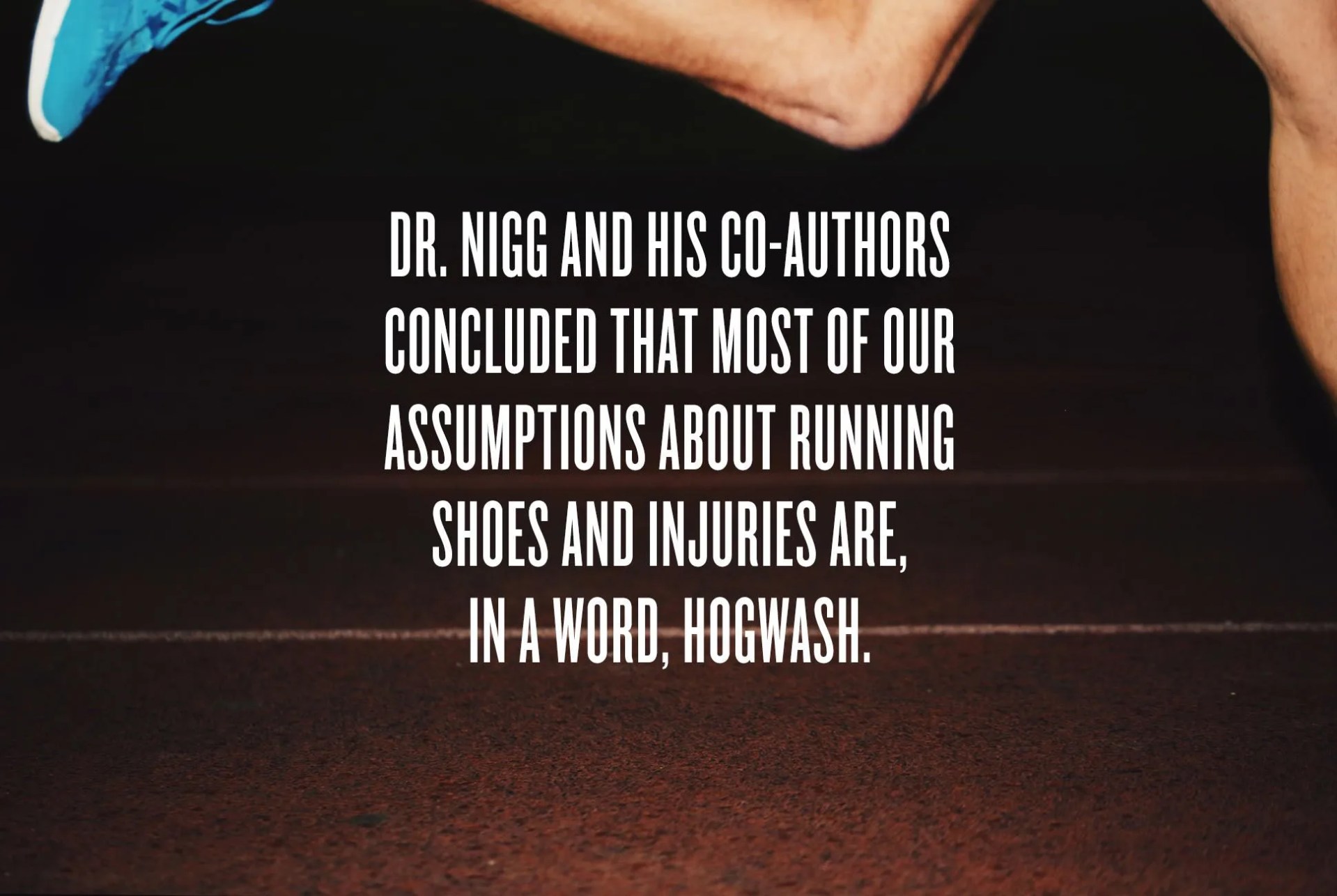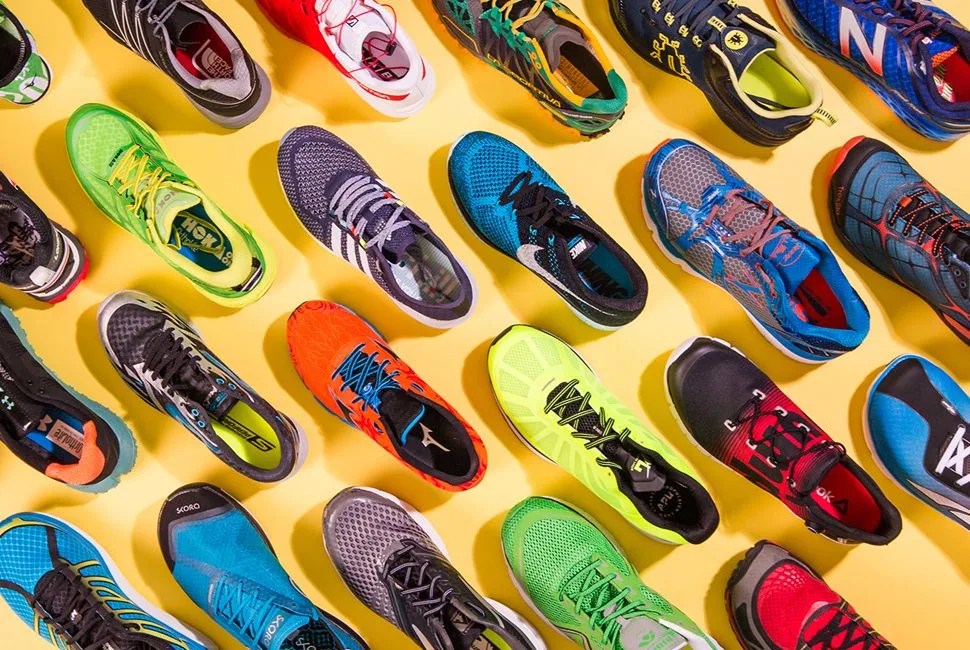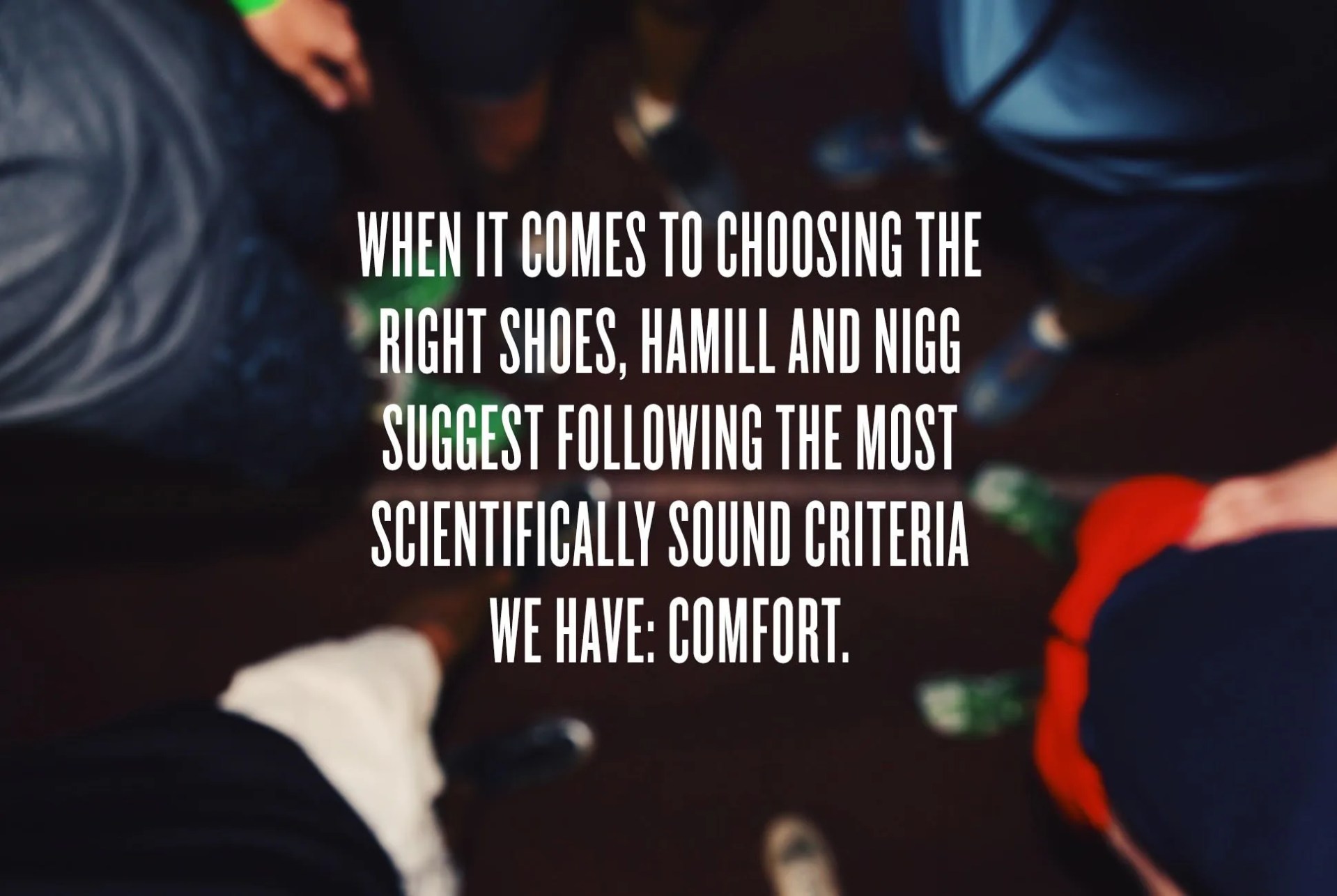Way back, at my fitness nadir, a sales guy at a specialty running store told me I should wear Asics. I was new to jogging, new to exercise for its own sake, and consequently had just finished college three pant-sizes above my ideal. After watching me clomp up-and-down the sidewalk a few times, the guy diagnosed me as a chronic over-pronator (I recall a somber, analytic air, like what you might encounter in an oncologist’s office) meaning that I rolled my feet inward as they left the ground. Over time, he said, this would lead to knee, ankle and hip pain, or debilitating mash-ups of all three, so I needed running shoes with mid-sole stability and liberal cushioning. Other phrases stuck, mostly for their odd eroticism: “moderate torsion rigidity,” “energy return,” and “neutral ride.” Fortunately, he grinned, all of my needs came neatly bundled in one pricey, state-of-the-art, Day-Glo pair of Asics.
I’ve since poured half a lifetime of faith and currency into Asics’s over-pronation correctives. Now, as I plod into my 40s, my body dwindles and recedes, its abiding pangs tripling monthly, it seems, as everything from the hips down creaks like corroded machinery. Iliotibialis. Patellofemoral region. Soleus. These things suddenly mean something to me, as all radiate pain. It’s in preparation for the grave that I’ve tried to resign myself to this, my mind on a vigilant appendicular death watch.
Like every running shoe company, Asics has gone deep into the curative design realms. The order of magnitude here is difficult to overstate. Injury-prevention metrics of pronation (over and under) and impact force (sometimes called “foot strike,” ameliorated by cushioning or lack thereof) are the industry’s theoretical guiding lights, against which all else is measured. In service to them, no amount of garbled techno-jargon and morbid joy has been spared. Asics’s GEL-Kayano running shoe, for instance, aimed at over-pronators like me, employs the company’s proprietary “FluidFit system,” which promises “biomechanical efficiency” through a unique “dynamic taping” matrix and “external heel clutching system” and “gender specific cushioning,” allowing “mild and moderate over-pronators” more “safety control” and “a more luxurious and longer run.” Fair enough. But does it work?

“We’ve talked about this for thirty years,” Joseph Hamill, professor of kinesiology and head of the Biomechanics Laboratory at UMass-Amherst, told me. “The fact is, foot pronation or impact force have never been conclusively linked with any kind of running injury, or even the prediction of injury.” Hamill and I were discussing a recent review in The British Journal of Sports Medicine by a biomechanics expert named Benno M. Nigg. After digging through 40 years of research, Dr. Nigg and his co-authors concluded that most of our assumptions about running shoes and injuries are, in a word, hogwash. Pronation, it turns out, isn’t a problem that requires correction or benefits from attempts to correct it via shoe design. And there is almost no evidence that impact force causes injury, or that changing or removing shoes (in the Vibram/barefoot vein) alters impact much at all.
To wit, everything we think we know about running shoes is wrong: footwear designed to somehow “fix” your running form and prevent injury – that is, basically all running shoes – according to Hamill and Nigg, are at best ineffective, at worst counter-productive. Despite decades of research and costly advances in shoe design and materials, running injuries haven’t abated one lick; in fact, more than half of runners still get injured every year, a rate comparable to what it was 30 years ago.


